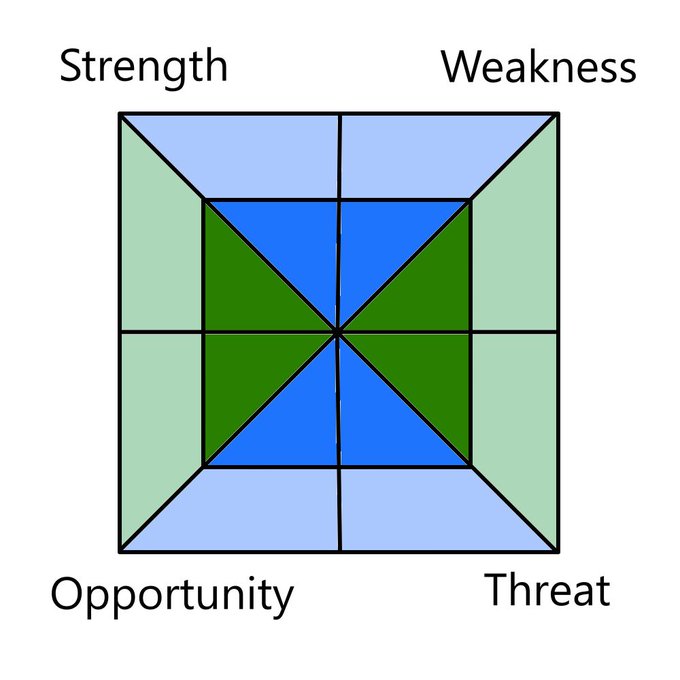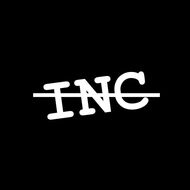What is PINE for SWOT?

PINE in Interstitialogy
- Bell-curves
- Strategic Inflection Points
- Logistic Regression
- Bloom's Taxonomy
- Rule of 3
- Inverted Mosaic



May 2025 was great to launch on several platforms and established a regular article writing cadence. Further, we are finding some success getting started with market outreach on X.
For the initial wave of free articles setting up independent research for the new field of Interstitialogy, we are now entering the capacity to offer subscriber exclusive content.
Starting this month (June 2025), we will have subscriber exclusive articles offering deeper dives than free articles. Some will also offer a more business-specific approach to improve potential value-add for those that support Incless, Ink here.
Note: Subscriptions are offered on multiple platforms. The 'exclusive' noted content will be the same for each platform, which each have the same subscription costs for consistency and to avoid FOMO, etc.

As societies and technologies become more complex, zero-sum approaches, where one group's gain is another's loss, fail to sustain progress.
Sustainable systems thrive by prioritizing adaptability over rigid control. In resource-scarce settings, centralized control may deliver short-term results but will struggle as complexity increases.
External innovations and shifts eventually expose the limits of rigid systems, which cannot keep pace with diversifying needs. Similarly, rigid ideologies falter when applied to a dynamic world.
Reality's complexity exceeds any single system's control. To thrive, social and technological systems must embrace localized, adaptable structures that respond to their immediate environment, much like nature.
For example, in chemistry, atoms form bonds that balance stability with flexibility, creating dynamic molecular structures. If these bonds were rigid, they would collapse under environmental changes.
Similarly, systems that adapt to their surrounds, rather than enforcing rigid control, sustain progress in a complex world.
How can individuals or small groups apply adaptability at a larger scale? Three lenses, multi-modal, fractal, and sustainability, offer a combined approach to coordinate with others and adapt to broader changes effectively.
To thrive in a complex world, view yourself and your group(s) as one of many interconnected nodes, prioritizing local needs while collaborating with others.
A multi-modal approach avoids rigid, centralized control and instead balances unique local needs with strategic cooperation.
For example, in geopolitics, a single global governance model fails because what benefits one region (e.g. heaters for Antarctic scientists) is irrelevant elsewhere (e.g. Sahara residents).
With a multi-modal approach, local nodes are empowered to make their own decisions for self advancement and sharing innovations. As Antarctic scientists may make discoveries about frozen deserts that are helpful to residents in the Sahara desert, mutual value and improved bonds can be fostered through collaboration after individual advancement.
No individual or group can monitor everything.
A fractal approach maximizes attention by focusing on core priorities while staying alert to relevant external changes, much like the structure of a tree. A tree's trunk supports its core, while branches and leaves capture energy from the environment.

Similarly, individuals or groups can prioritize their primary goals (the trunk) while maintaining peripheral awareness (branches and leaves) to detect opportunities or threats both known and in interstitial space, the gaps between focus areas.
This approach ensures nodes thrive by focusing on what makes them unique while staying connected to broader systems.
Priorities and attention must evolve as needs and environments change.
Like a tree adapting through seasons, shedding leaves or growing new branches, sustainable systems adjust to balance internal needs with external threats and opportunities.
By monitoring interstitial spaces, nodes can reallocate resources effectively, ensuring long-term growth. For example, a business might scale back one product line to invest in a new innovation, sharing resources with other nodes for mutual benefit.
As a multi-mode approach helps to better establish the self and relations to others, fractal prioritization helps to channel the node's limited resources in a larger environment. Keeping an eye for sustainability adds a temporal context for where to align focus and effort.
Don't just build something for growth alone. Hone potential growth in a way that improves your position to interact with others and respond to change.
Interstitialogy studies how to balance and engage with the space between focus areas. As quo pro quo defines a stance for disruptors to make significant connection with established groups, multi-modal fractal sustainability improves the adaptability of established groups to capitalize on disruptors.
With these basics understood, it is possible to identify which of the field's tools will be needed and when. Usage will also be customizable for maximum effective use.
Incless, Ink will continue independent research for Interstitialogy with the following primary source content development:
Tools - specific applied logic that either expands existing practices to an interstitial range (such as adapting SWOT -> PINE) or adapts and focuses practical signal out of alien noise
'What If' Explorations - re-imagining existing social and business structures from the very beginning to broaden reader perspective and discussion on persistent problems for realizable solution development
Case Studies - analyzing where significant outliers found established group acceptance and success (e.g. experimental apprenticeship programs), or where new dynamic value was only possible due to the interaction of multiple groups (e.g. Telsa autonomous driving development <-> Space X re-usable rocket launch capacity)
Broadening discussion to improve stability and scalability in the challenging times ahead is the primary mission of Incless, Ink. 'First' articles of any type will always be free, with additional exclusive content coming soon to subscribers (all platforms linked on https://inclessink.com/).
The more support received, the more we can expand our independent research beyond social media. To start, we are focusing on fields that already touch on all others: education, training, recruiting, technology, and entertainment.
Disruption often sparks conflict, but does it need to? Imagine being able to transform chaos into collaboration and opportunity.
Interstitialogy offers tools connecting the space between new ideas with existing systems to help entrepreneurs, businesses, and policymakers adapt and thrive. However, new ideas often face resistance, and this new field's unconventional approach can struggle for attention without building an appropriate hook. By building on existing incentives, Interstitialogy can create access points to help transform disruption into opportunities for all.
Most established groups, governments or corporations, have rigid official processes. However, they may often make unofficial exceptions or selective favoring from ad-hoc incentive driven actions such as quid pro quo. Someone outside of the group offers something of value in exchange of the established group modifying their regular process for their exclusive use.
Often quid pro quo actions come at the cost of both integrity (rule breaking) and versatility (over-regulation) in favor of promoting a general sense of control unsustainable in an environment of increasing change. Established groups need a method to adapt, making exceptions that boost reliability and flexibility through accommodation instead of capitulation.
The incentives perpetuating quid pro quo activity will never go away, and they do not need to. Recognizing the persistence of the incentive driver is an opportunity to transform the resulting activity into something more productive. Since that incentive is always there and agnostic to every established group, it is a prime candidate for introducing 'new' opportunities to otherwise rigid established groups.
Along with being an opening to introduce new things, focusing on elevating the incentive response above quid pro quo adds additional incentive of improving ethics, reliability, and more. This leads to a potential to transform quid pro quo behavior to something more quo pro quo.
Disruptors can seize this chance to create win-win solutions as direct opportunities for others. Advancing quid pro quo incentives into a more mutually beneficial quo pro quo approach can help disruptors ensure scalability and stability for established groups and themselves. Unlike quid pro quo's transactional trades (e.g. offering value for exceptions), quo pro quo fosters mutual growth and adaptability that can be maintained transparently and as long as needed.
Let us use an analogy with a space station to give illustration to the functional aspects of Quo Pro Quo.
Instead of a disruptor coming in fast toward a space station like a meteor with hope it can launch regardless of what's in its path, it will adjust its speed to match momentum and align itself to a proper docking port. The disruptor's union with the space station will impact the station's mass and thus orbital requirements, but the disruptor can make its own orbital adjustments while docked to compensate. Both can appreciate benefits from their combined mass as they increase their stability through their mutual travels. If/when they reach a point where the disruptor is able to move on, it can leave the established group to continue its journey without negative effect.
Another breakdown of the steps involved makes use of interstitial space to identify and communicate gainful connection opportunities.
Identify impact and flexibility areas (circles)
- Pinpoint where your disruption affects the established group
- Look for areas where they've been flexible in the past (e.g. past quid pro quo activity)
Find potential intersection points (rings)
- Use Interstitialogy tools to align shared goals (details are coming soon for such tools like PINE (a next-gen SWOT analysis) and the Risk/Reward Rubicon (for balancing innovation risks))
- Ex. A tech startup might find a corporation open to adopting AI tools
Map the range of flexibility areas (waves)
- Assess flexibility for both parties to transparently negotiate compromise
- Ex. A startup offers multiple scalable options, a corporate provides data access to focus and customize those options

As tools from Interstitialogy can help navigate the peripheral space, they can also help identify and communicate points of potential connection. Disruptors can thus engage directly with established groups to meaningfully engage where they are most flexible to offer new opportunities. As established groups could allow for change via quid pro quo before, the disruptor can help make better use of that mechanism ethically with a quo pro quo process.
While misalignment is always a risk, Interstitialogy tools help maximize alignment potential and ensure both parties' goals are communicated and understood from the start. The quo pro quo approach further priorities transparency and mutual benefit, ensuring sustainable partnerships.
Temporary or long term, a beneficial symbiosis can be offered as quo pro quo instead of the limited transactional approach of quid pro quo. Further, the process of building toward this strategy helps more generally align disruptors against market entry barriers. Businesses can remain competitive and policymakers can foster innovation in an increasingly disruptive world.
Stay tuned for more independent research articles on Interstitialogy tools like the Risk/Reward Rubicon, with free articles and discussion on X and exclusive content on our subscriber sites.
Share your thoughts here. How can disruptors and established groups better collaborate in your industry? How can you communicate something genuinely 'new' in a productive manner?
